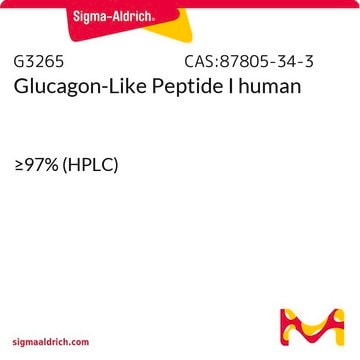M0696
Anti-MNK2 (N-terminal)

~1.0 mg/mL, affinity isolated antibody, buffered aqueous solution
Sinonimo/i:
Anti-GPRK7, Anti-MAP kinase interacting serine/threonine kinase 2, Anti-MKNK2
About This Item
Prodotti consigliati
Origine biologica
rabbit
Coniugato
unconjugated
Forma dell’anticorpo
affinity isolated antibody
Tipo di anticorpo
primary antibodies
Clone
polyclonal
Forma fisica
buffered aqueous solution
PM
antigen ~50 kDa
Reattività contro le specie
rat (predicted), human, mouse (predicted)
Convalida avanzata
recombinant expression
Learn more about Antibody Enhanced Validation
Concentrazione
~1.0 mg/mL
tecniche
immunocytochemistry: 2-5 μg/mL using paraformadehyde fixed HEK-293T cells transfected with human MNK2
immunoprecipitation (IP): 2-4 μg using lysates of HEK-293T cells transfected with human MNK2
indirect immunofluorescence: suitable
western blot: 1-2 μg/mL using lysates of HEK-293T cells transfected with human MNK2
N° accesso UniProt
Condizioni di spedizione
dry ice
Temperatura di conservazione
−20°C
modifica post-traduzionali bersaglio
unmodified
Informazioni sul gene
human ... MKNK2(2872)
mouse ... Mknk2(17347)
rat ... Mknk2(299618)
Categorie correlate
Descrizione generale
Immunogeno
Applicazioni
Stato fisico
Esclusione di responsabilità
Not finding the right product?
Try our Motore di ricerca dei prodotti.
Codice della classe di stoccaggio
10 - Combustible liquids
Punto d’infiammabilità (°F)
Not applicable
Punto d’infiammabilità (°C)
Not applicable
Dispositivi di protezione individuale
Eyeshields, Gloves, multi-purpose combination respirator cartridge (US)
Certificati d'analisi (COA)
Cerca il Certificati d'analisi (COA) digitando il numero di lotto/batch corrispondente. I numeri di lotto o di batch sono stampati sull'etichetta dei prodotti dopo la parola ‘Lotto’ o ‘Batch’.
Possiedi già questo prodotto?
I documenti relativi ai prodotti acquistati recentemente sono disponibili nell’Archivio dei documenti.
Il team dei nostri ricercatori vanta grande esperienza in tutte le aree della ricerca quali Life Science, scienza dei materiali, sintesi chimica, cromatografia, discipline analitiche, ecc..
Contatta l'Assistenza Tecnica.







